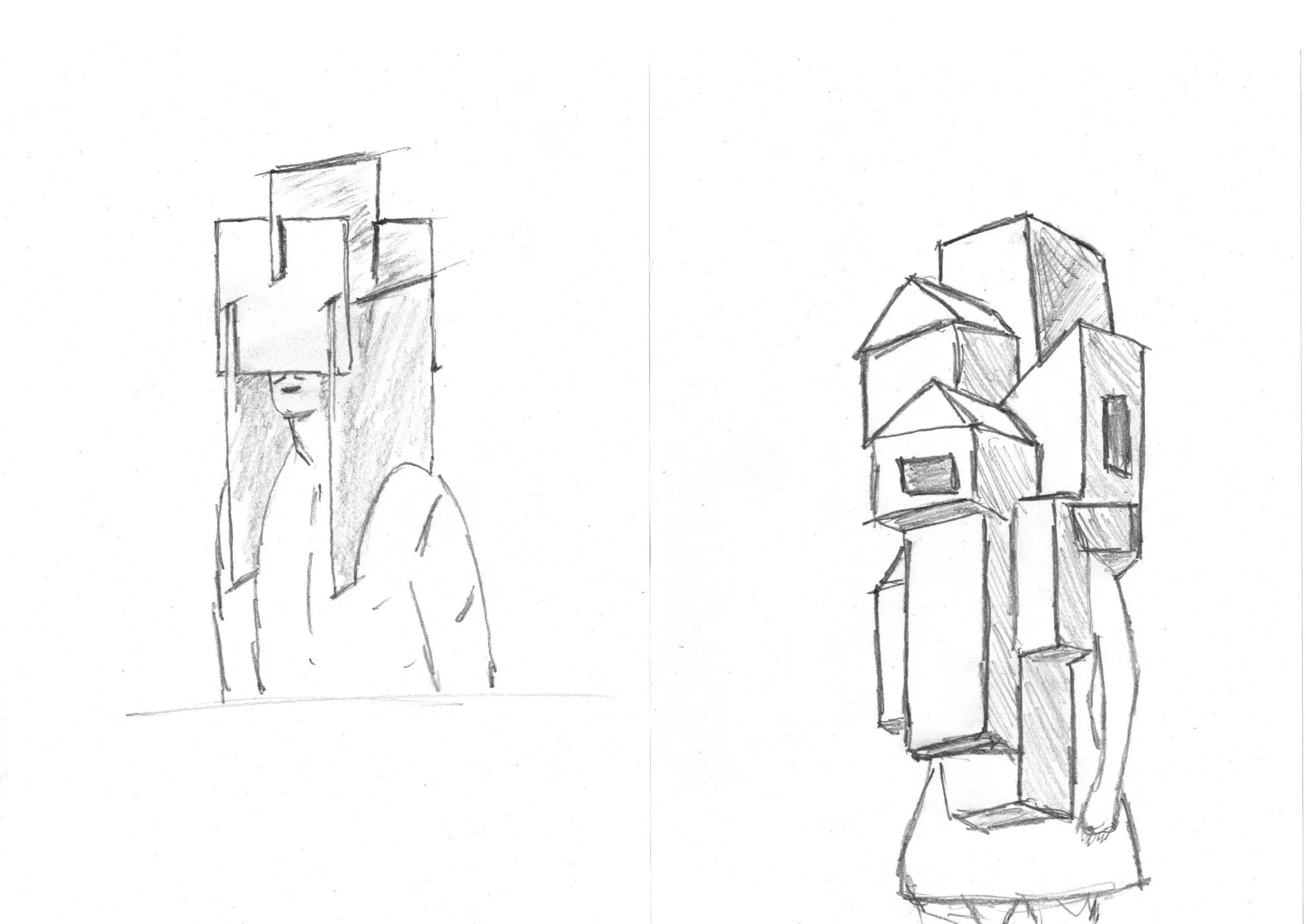Queer Embodiment and Space
Research • Queer Corporeality • Spatial Politics • Body and Space
This body of interdisciplinary and transmedial work examines architectural treaties and spatial politics from a queer-feminist perspective. Architectural and spatial design ideologies are interrogated through critical spatial practices, a research and artistic strategy pioneered by Dr. Jane Rendell. The works operate at a triple crossroads: between theory and practice, between public and private, and between art and architecture.
Central to the critical investigation is the male body, which for centuries served as the ideal model for proportions and design, as epitomized by the Renaissance’s Virtruvian Man, Le Corbusier’s Modular Man, and many others. This male-, hetero- and Western-centric anthropomorphism was foundational to modern Western architectural theory, directly linking the subject of the body, its gender and sex, to (queer) spatial politics. Many of the works rely of the arguments and thoughts from feminist architectural theorists like Diana Agrest, among others.
“The queer body does not move through space—it tests it. It resists the assumption that space is neutral. It reveals the lie that architecture is passive. Space, like the body, is coded, disciplined, performed.”

Studien der Übungen
Video installation, currently consisting of five video loops, since 2024
The installation examines how physical culture shapes and constrains the body, from nationalist gymnastics and modern fitness rituals to the subtle regimes of self-optimization. Yet repetition also becomes a site of refusal: gestures slip, slow, exaggerate, falter, become absurd. The body resists its own choreography, queering ideals of strength, purity and control.

Architecture Undone (in progress)
Work-in-Progress: This project explores how systems of architectural design function performatively in space, creating spatial logics through which power, proportion, gender, and normativity are ritualized.

Vitruvius from Without
2024, Solo Exhibition, Stadtgalerie Klagenfurt

My Very Flesh Shall Resist Every Stone
2021/2023, Photography, Installation

Essay: On Queer Embodiment and Space
Drawing on lived experience and spatial theory, it explores how queer bodies engage with architecture, publicness, and the everyday choreography of visibility. Rather than simply occupying space, queer embodiment transforms it, revealing how social and physical environments produce, constrain, or allow different forms of being. The essay examines how the body becomes both sensor and sign within space, challenging its implicit norms and proposing new possibilities for presence and belonging.

This Is My Fortress, Where I Contain My Fears
2022, Video, Intervention